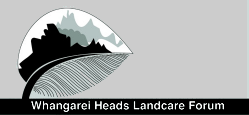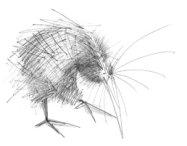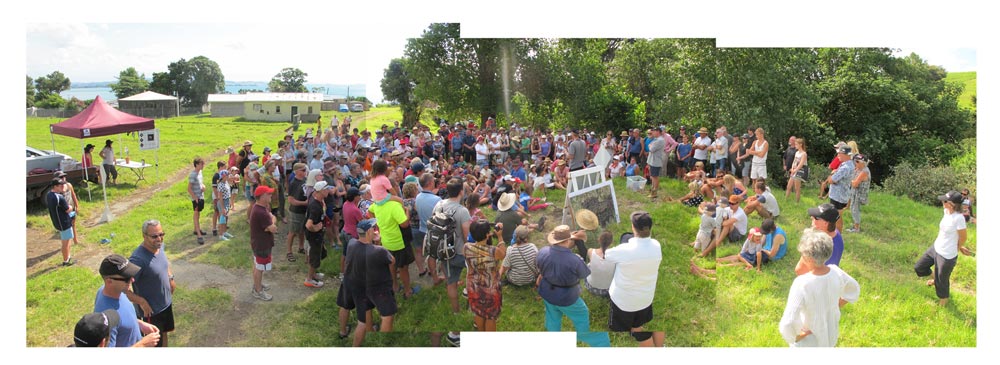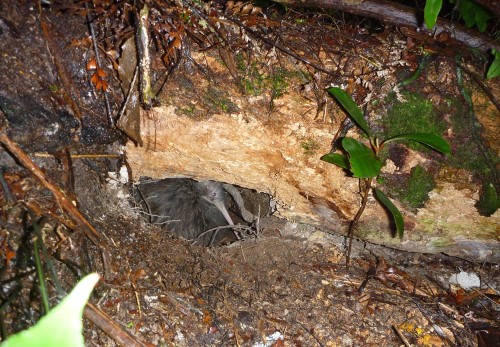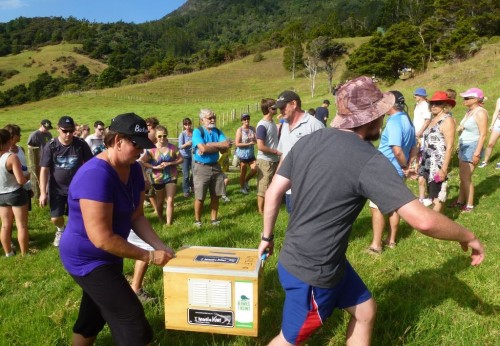One of the highlights of Backyard Kiwi at Whangarei Heads are our kiwi releases. Since 2003 we have supplemented the kiwi population by releasing kiwi to introduce wider genetic variety into our area.
These releases are a fantastic opportunity for locals to see live kiwi in their backyard, and have become a cornerstone of our community engagement. We also monitor a small sample of the released kiwi with radio transmitters.
Where do these kiwi come from?
We monitor adult male kiwi at Purua, Riponui and Rarewarewa to get their chicks. These areas have a high density of kiwi, as Department of Conservation have carried out a long term predator trapping programme there and local farmers have maintained an area of good dog control. This is Ngati Hine rohe and Backyard Kiwi are extremely grateful for their ongoing support of this program.
Getting the kiwi chicks
We monitor the males, because it is the kiwi dads that incubate the eggs after the mum has made a big effort to lay the eggs, usually two at a time!
The kiwi dads have “chick timer” transmitters on them that tell us when they are nesting and then when the egg hatches by their radio signal.
Kiwi chicks become independent very shortly after hatching so we collect the chick from the nest – dad is pretty keen to see the chick go after spending 80 days hatching it.
A transponder with a unique identity code is inserted into the chick, so we know which kiwi is which. The transponder is about the size of a grain of rice, so it doesn’t bother the kiwi. A short boat trip to Limestone Island on the Whangarei Harbour is arranged with the FOMLI ranger and the chick is released on the stoat free island to free range.
The chicks grow from around 300g to 1200g in six months or so on the island, and then they are ready to come back to the mainland. We recapture the kiwi using spotlights at night.
Kiwi are the slowest growing bird in the world and at 1200g are only juveniles.
The kiwi juveniles are carefully transported in dark boxes to a welcome at Whangarei Heads. There are kiwi smiles all around as we release these kiwi into our backyard!











